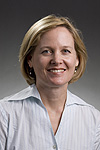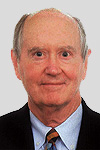Send your nominations for the Scientist Advisory Council
 |
|
Camille Ginsburg
|
|
|
|
 |
|
Chris Quigg
|
|
Camille Ginsburg and Chris Quigg, co-chairs of the Scientist Advisory Council, wrote this column.
The Scientist Advisory Council (SAC), founded in June 2013, is a group of approximately 15 members of the Fermilab scientific staff, diverse in areas of expertise and experience. The SAC will finish up its current term on Sept. 30. We are currently soliciting nominations for the 2015-17 term.
A goal of the SAC is to share with the director new developments that might have implications for the future scientific program. SAC members engage in open discussion on topics of interest for both short- and long-term scientific plans for the laboratory's research program. In some cases this means bringing to Fermilab recent results from conferences or important small advances that may fly under the radar. Members have been involved in the organization of scientist retreats related to lab scientific prioritization and the P5 roll-out. Meeting discussions have focused on recent results from non-Fermilab experiments with bearing on Fermilab science, as well as whether new science topics may align well with Fermilab priorities. SAC members have invited presentations on recent scientific results and project or experiment status from scientists across the lab. They also nominate Fermilab or Fermilab-affiliated scientists for lab and professional organization committees.
The SAC discusses issues related to careers and professional development of the Fermilab scientific staff. Members have been involved in the working groups for new scientist policies associated with searches and hiring, promotions and terminations. They have fielded questions and responded to concerns and criticisms associated with the new policies and brought those as needed to the Directorate. We have discussed how these policies are being implemented and followed up. They also bring up topics for future committees, for example, how to implement an effective labwide mentoring for junior lab scientists.
SAC is concerned about practical organizational and funding issues, such as interdivisional cooperation and how to fund science through private donations.
SAC members are expected to communicate openly to the director topics of interest or concern that he may not hear directly. Since members of the Directorate and division heads already have a clear communication path with the director, they are not eligible to be members.
Former and current members are:
2013-2014: Lothar Bauerdick, Kevin Burkett, Ioanis Kourbanis, Joe Lykken, Gina Rameika (co-chair), Vadim Rusu, Panagiotis Spentzouris and Bob Tschirhart (co-chair).
2013-2015: Aaron Chou, Scott Dodelson, Camille Ginsburg (co-chair), Valeri Lebedev, Vivian O'Dell, Jen Raaf, Ruth van de Water and Bob Zwaska.
2014-2016: Giorgio Ambrosio, Dmitri Denisov, Oliver Gutsche, Jim Hirschauer, Brenna Flaugher, Rob Plunkett, Chris Quigg (co-chair) and Sam Zeller
If you know of scientists who could make valuable contributions to our group by becoming a member, please email your nominations to us by Sept. 15: quigg@fnal.gov or ginsburg@fnal.gov.
|